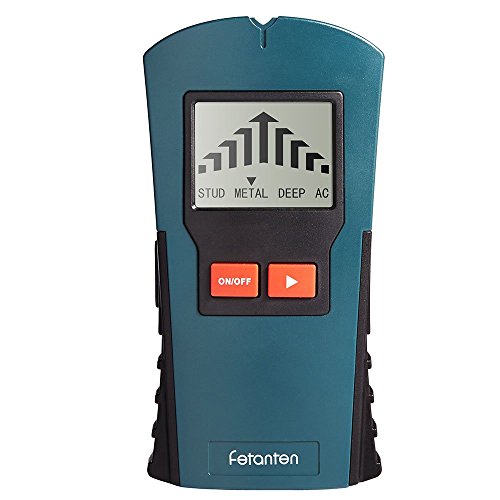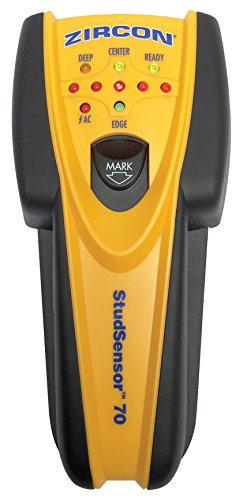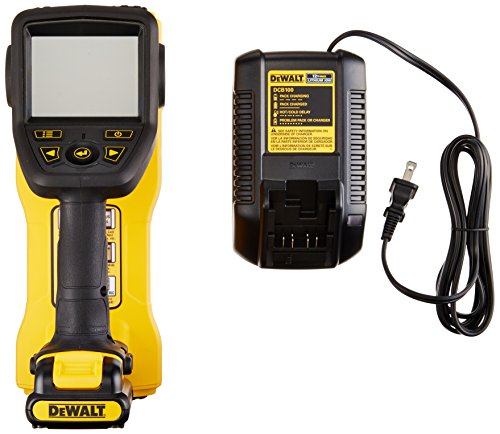(Part 2) Best stud finders & scanners according to redditors
We found 240 Reddit comments discussing the best stud finders & scanners. We ranked the 43 resulting products by number of redditors who mentioned them. Here are the products ranked 21-40. You can also go back to the previous section.




















Start small, do your homework, think the project through and then just do it! You will definitely make some mistakes, but see it as the price of learning to DIY. Just try and avoid potentially dangerous situations...
It's not too terribly difficult, honestly. I enjoy it. There's a bunch of ways, but here's some tips that I have figured out.
Congrats, you've run a cable! It's female at both ends, so you can just use a patch cable to run from the wall to your PC, and from the patch panel to your switch, to your modem/router, etc. This wire is now a part of the infrastructure of your house - you won't have to cut anything out when you leave, you just unplug the wires and leave the infrastructure for the next person.
Hope this helps.
Use one like this: https://www.amazon.com/dp/B0711JZS33
Costco sells them for $30. They are, by far, the best stud finder I've ever used. I hate finding studs using a magnet because what you're really finding is nails and screws, and they are rarely near where you want to put something in the wall and are NEVER in the middle of the stud.
[Note: Sorry for trying to post 3 times, the bot thought it had an affiliate link in it even after I removed it]
Esistono i cercatubi, vanno dai 20-30 euro ai 600 euro per questo oggetto del desiderio di ogni uomo che si rispetti.
Se non ne hai uno guarda dove sono prese/rubinetti/etc e tieniti a 10-15cm di distanza dalle linee a loro perpendicolari, quindi prega forte la madonna.
Beccare la corrente non è un grosso problema, il trapano è isolato e al limite salta solo il tuo contatore. L'acqua è più rognosa, se vivi in condominio prima di procedere individua come chiudere l'acqua al tuo appartamento o eventualmente la valvola generale di tutte le utenze nel caso peggiore. Le tubature del gas se tutto è a norma non sono mai murate, dovresti poterle seguire ad occhio dalla facciata del condominio e vedere dove finiscono.
Use the stud finder to locate a stud in your wall (closets can be a good place), mark it above the top of the safe. Take your safe, find the holes in the back (or drill some) Mark the top of the safe in line with the holes in the back. Line up both marks, getting the safe as close to the wall as possible (you might need to put it up on some plywood if there is a kicker board). Drive the bolts into the stud anchoring it in place.
This is easy to remove and patching 4 or 5 screw holes in drywall is something that most apartment dwellers will be doing anyway.
OK.. now I feel much better!
Really though.. you should get a Multi-Scanner and scan the ceiling for electrical.
It could be that some nimrod plastered over it.. totally illegal.. but there are a lot of stupid people in the world.
Hmm...most useful things for $300. I would recommend Lowe's/Home Depot, but since you're limited to Amazon....
There's lots of other stuff, but my mind has drawn a blank right now.
I rewired a couple of my XJs with this stuff:
https://www.amazon.com/Monster-50-Ft-Navajo-Compact-Speaker/dp/B007Z8D4C6/ref=sr_1_1?ie=UTF8&qid=1483536009&sr=8-1
I went with four Infinity 5.25" speakers.
https://www.amazon.com/Zircon-SS-70-Center-Finding-WireWarning/dp/B01AHYDXGQ/
It sounds like you need a stud finder with a deep scan function for thicker walls. Beyond that the models with an LCD screen like this one for $30 tend to be easier to use for actually finding the center of the stud.
There's kinda one like that.
Just to be clear, I have absolutely no idea if it's any good, please do your research before you buy one!
https://www.amazon.com/Walabot-Imager-Android-Smartphones-Compatible/dp/B06Y29NXKK
If it works as advertised, it should help with routing. You won't be able to just point it upwards, but you should be able to look at a given segment of wall, make sure it's clear, and then go upstairs to the corresponding segment of wall and do the same. Repeat until you've found a suitable path through all stories.
Please note that unless your house is an ancient deathtrap, there will be firebreaks between the floors that you'll have to drill through (be sure to use fire-rated foam to seal it back up!) regardless, so don't worry too much about finding a place with no top or bottom plates that you have to get through. Those should be everywhere.
You might be able to find walls above you by looking at the joists through the ceiling, but I imagine that'll take some practice. You might have better luck using a measuring tape and drawing a very accurate floorplan.
You use a stud finder.
Buy this Franklin Sensors stud finder or something higher, nothin lower. You will have it for life. I own one and it's the tits.
Also buy a roll of paper drywall tape. That mesh stuff is crap. You need to rebuild those holes with paper and gypsum (spackle). Any will due.
Clean holes with stiff bristle brush. Try to save any chunks that have intact, contiguous paper that are flapping around, they will increase strength.
Fill, mud and tape. Let dry. Light wet sand (wet dish rag). Let dry. Mud again if you see edges. Let dry. Wet sand. Dry sand. Paint. Dry times are 24 hours to be safe.
It is the only way!
Reference: Parent of 2 children under 5.
Price History
CamelCamelCamel │ Keepa
_
Don't Rook too long, these prices might not last.
^(Info) ^| ^(Developer) ^| ^(Inquiries) ^| ^(Support Me!) ^| **[^(Report Bug)](/message/compose?to=The_White_Light&subject=Bug+Report&message=%2Fr%2Famazondealsus%2Fcomments%2Fbqzotg%2F20_off_of_stud_finder1756%2Feo91omy%2F%0D%0A%0D%0A%0D%0A%0D%0APlease+explain+here+what+you+expected+to+happen%2Fwhat+went+wrong.)**
I use a cheap Black & Decker. The key is to hold it away from anything solid while you press the button, THEN you stick it on the wall and start sensing.
Or you just get this DeWalt one!
StudSensor HD800 Stud Finder https://www.amazon.com/dp/B00NXKZJ96/ref=cm_sw_r_cp_awd_dKb-wbT1H11QY
I have a small one that I think most pros have figured out but was huge when I started off.
For stud finding, forget anything with batteries. Get this use it to find a pattern of drywall screws (which would indicate a stud), and never miss a stud again. I despise electric stud finders and I wish I had learned this tip sooner.
Honestly I've tried a bunch of different stud finders with bad results like you indicated. I bought this one https://www.amazon.com/ProSensor-T6-Professional-Stud-Finder/dp/B071LF2BRY a few years back and have never missed a stud for anchoring or cutting in new electrical boxes.
The magnet method works good as well. My pops used to use it with a little device like this one https://www.amazon.com/Pack-Stanley-47-400-Magnetic-Finder/dp/B002YCSIJC
Something like this. https://www.amazon.com/dp/B000BQ7WA4/
I tried using digital finders for some five years before switching to magnetic. It was just an extra pain in the ass. A quarter of the time it throws me off, and the rest of the time I was constantly changing batteries to make sure it's working right
A 'Stud Finder' apparently does the job. I say apparently because they can also be quite unreliable (apparently).